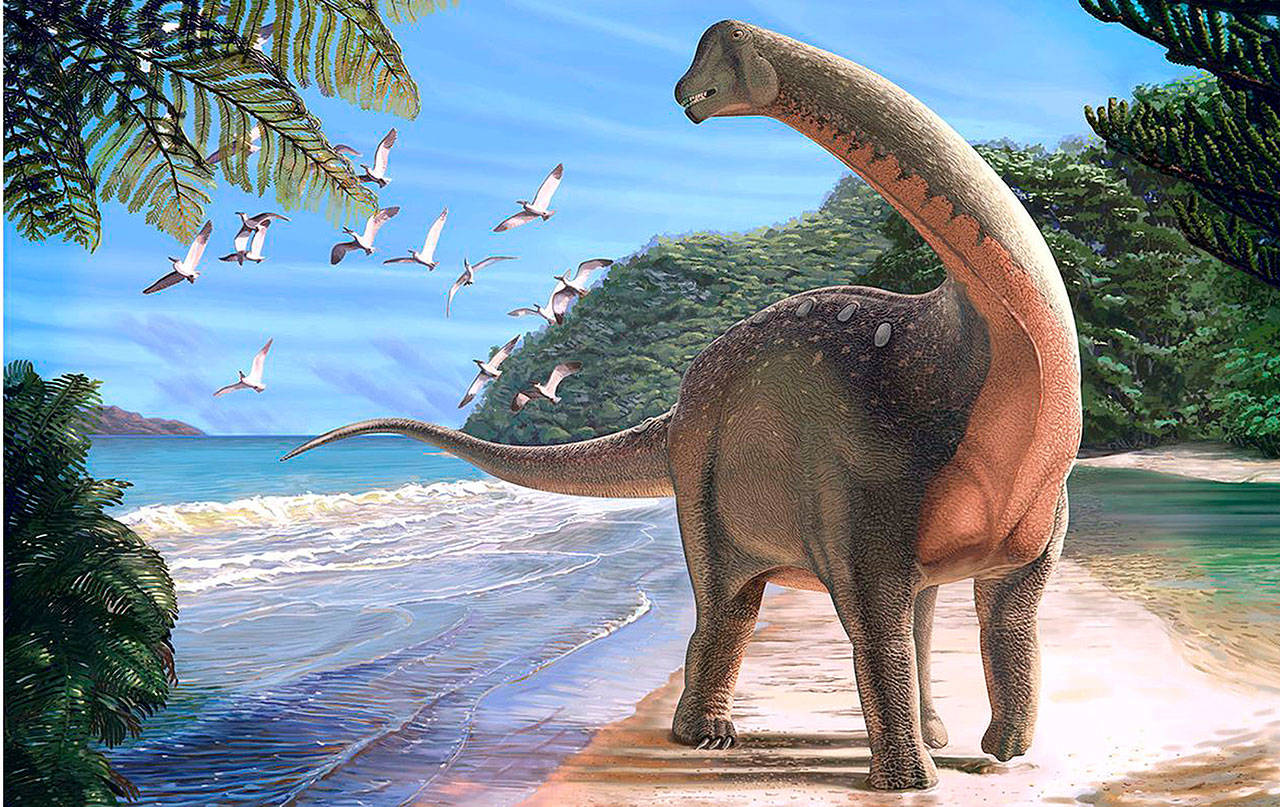By Karen Kaplan
Los Angeles Times
Introducing Mansourasaurus shahinae, a newly discovered dinosaur from Egypt.
It’s a big discovery in more ways than one.
This dinosaur is a titanosaur, so it belongs to the same group as some of the largest creatures that ever walked the Earth.
It’s also Africa’s most complete dinosaur specimen from the late Cretaceous epoch, researchers say. Thanks to its age and location, the researchers are optimistic that it will help them understand the geological and biological links between Africa and the other continents.
A team led by vertebrate paleontologist Hesham Sallam of Egypt’s Mansoura University reported the find Monday in the journal Nature Ecology and Evolution.
This dinosaur was a creature to be reckoned with.
The study authors estimate that Mansourasaurus was about as long as a school bus and as heavy as an African elephant. It measured 26 to 33 feet from the front of its small head to the end of its long, tapering tail.
That huge body was fueled by a plant-based diet.
Some of the bones in the dinosaur’s front legs had not fully fused. That led the study authors to believe that this particular animal had not yet reached its adult size.
Everything they know about Mansourasaurus is based on an assortment of bones found in the Dakhla Oasis in Egypt’s Western Desert. About 80 million years ago, when this dinosaur was alive, the area was lush and coastal.
The bulk of the bones are vertebrae from the dinosaur’s neck and back, some of its ribs and portions of its shoulders and front legs. Paleontologists also recovered pieces of its skull and jaws, a few bones from one of its hind feet and what they think were bony scales known as osteoderms.
Its features prompted the paleontologists to classify Mansourasaurus as a titanosaur, a group that includes Dreadnoughtus, the 65-ton behemoth that weighed more than a Boeing 737, and the slightly larger Patagotitan, which was 12 times heavier than an elephant. However, for a titanosaur, Mansourasaurus was not particularly big.
The researchers are hopeful that that the discovery will help them understand some of the major changes that were happening during and after the late Cretaceous. The continents were pulling away from each other at that time, and scientists don’t know how isolated the animals of Africa were.
M. shahinae’s bones suggest that the animals weren’t as cut off as some researchers had come to believe. This creature appears to have been a closer relative of dinosaurs from Europe and Asia than it was to dinosaurs from the southern part of Africa or from present-day South America.
The dinosaur was named for Mansoura University and for Mona Shahin, who helped found the school’s Vertebrate Paleontology Center.


